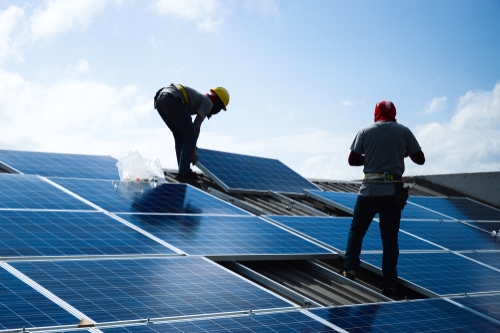SEIA: Solar installations in 2023 to exceed 30 gigawatts

A new report from the Solar Energy Industries Association and Wood Mackenzie found that 2023 will be a record setting year for the U.S. solar industry as it adds 32 gigawatts of capacity.
The capacity of the installations is a first, the report, U.S. Solar Market Insight Q3 2023, said, representing a 52 percent increase over 2022.
“The United States is now a dominant player in the global clean energy economy, and states like Florida, Texas, Ohio, and Georgia are at the forefront of this job growth and economic prosperity,” SEIA president and CEO Abigail Ross Hopper said. “The solar and storage industry is delivering abundant clean energy that is generating tens of billions of dollars of private investment, and this is just the tip of the iceberg.”
The report said the solar market has been hampered by supply chain challenges due to the COVID-19 pandemic, as well as restrictive trade policy. However, SEIA said, those challenges are beginning to abate, and as the Inflation Reduction Act takes hold, total operating solar capacity is expected to grow to 375 GW by 2028.
Domestic manufacturing investments are expected to improve supply conditions, and if the factory announcements materialize by 2026, U.S. solar module manufacturing output will be 10 times greater than it currently is, the report said.
“In the year since its passage, the IRA has undoubtedly caused a wave of optimism across the solar industry. Announcements for domestic module manufacturing have exploded, promising more stable solar module supply in the future,” said Michelle Davis, Head of Global Solar at Wood Mackenzie., said. “Now the challenge becomes implementation — the industry is waiting for clarity on several IRA provisions before moving forward with solar investments.”
The report said increasing energy prices in certain states is driving demand in the commercial solar market. Florida dominates the 2023 solar state rankings, installing 2.5 GW of new capacity in the first half of this year, which is 52 percent more than the next highest state, California, and more than Florida has ever installed in a single year.
